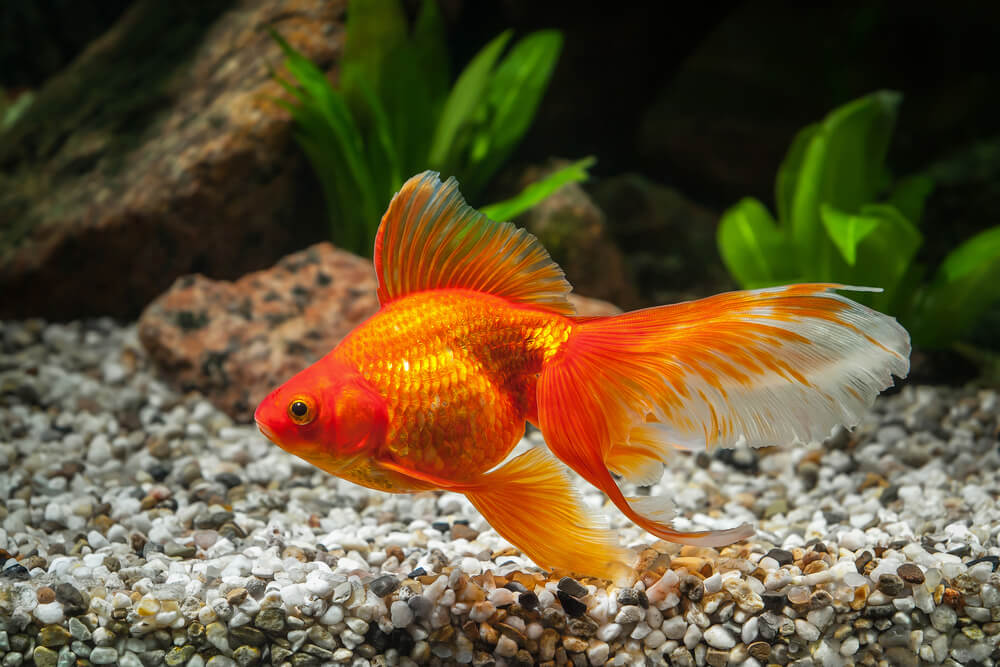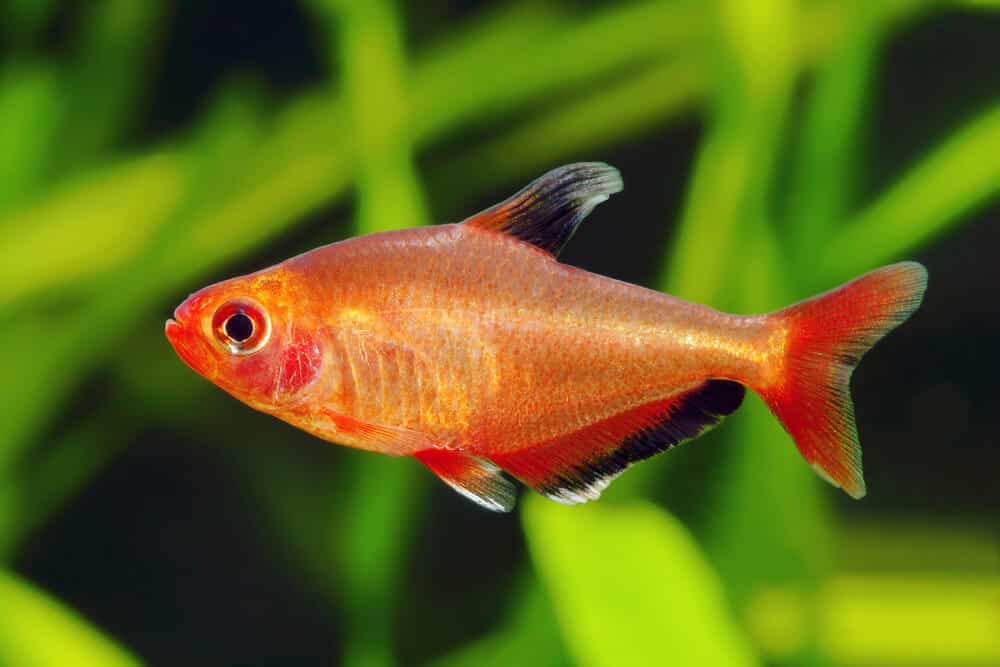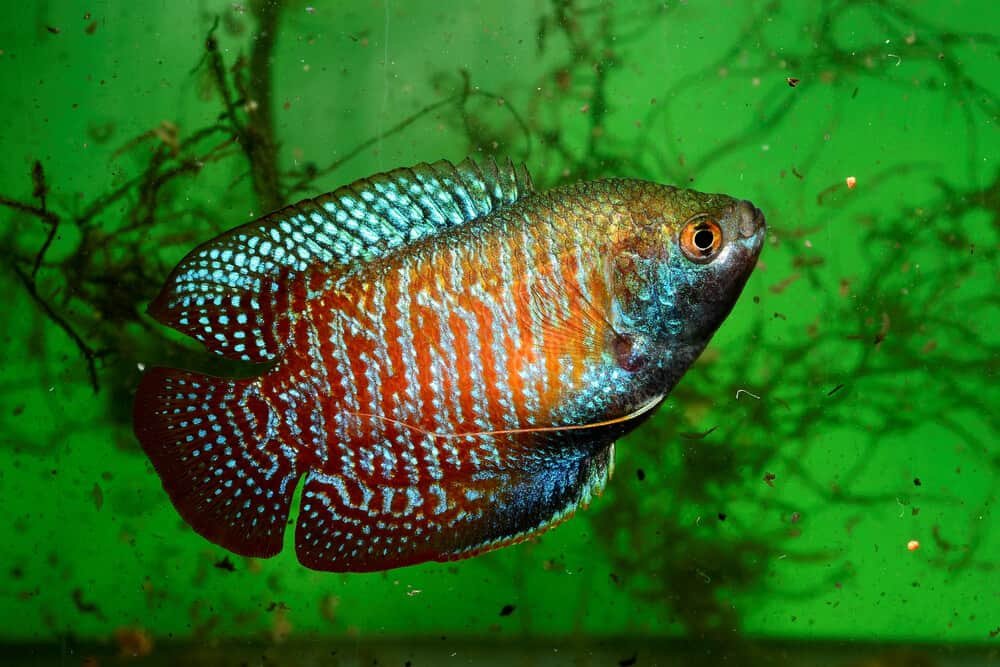Fantail Goldfish Care: Proper Feeding and Tank Setup

Imagine a world where vibrant colors and graceful movements enthrall your senses. In this captivating article, you will discover the mesmerizing Fantail Goldfish. With its distinct fan-shaped tail and brilliant hues, this majestic fish is a true delight for any aquarium enthusiast. Join us as we explore the unique characteristics and care requirements that make the Fantail Goldfish a popular choice among fish enthusiasts worldwide. Get ready to embark on an aquatic adventure unlike any other!
Physical Appearance
Fantail Goldfish are known for their distinct physical characteristics. With their unique body shape and flowing twin tails, they are a sight to behold. These fish have a round, plump body, and their fins are long and graceful, cascading down from their bodies like butterfly wings. Fantail Goldfish come in various sizes, but generally, they can grow up to 6-8 inches in length. Their small size makes them ideal for both indoor aquariums and outdoor ponds.
When it comes to colors and patterns, Fantail Goldfish offer a wide range of options. They can display stunning colors such as red, orange, white, black, and combinations of these shades. The patterns can range from solid colors to exquisite variegations, including calico patterns, metallic scales, and even matte finishes. These variations add a touch of uniqueness and beauty to each Fantail Goldfish.
Housing Requirements
Providing a suitable living environment is crucial for the health and happiness of Fantail Goldfish. Let’s delve into their housing requirements to ensure they thrive in their new home.
Tank Size
When it comes to tank size, bigger is always better. Fantail Goldfish require ample space to swim and explore. A tank with a minimum capacity of 20 gallons is recommended for a single Fantail Goldfish. However, if you plan to keep multiple fish, it’s advisable to increase the tank size accordingly.
Water Conditions
Maintaining proper water conditions is essential for the well-being of Fantail Goldfish. They prefer a pH level between 6.5 and 7.5, with a water hardness between 5 and 12 dGH. Additionally, regular water changes are crucial to remove any waste build-up and maintain water quality.
Filtration and Aeration
A reliable filtration system is a must-have for Fantail Goldfish tanks. A good quality filter will remove waste and circulate the water, keeping it clean and oxygenated. Additionally, an air pump or airstone can help provide adequate oxygen levels and promote a healthy environment.
Decorations
Adding decorations to the tank not only creates an aesthetically pleasing environment but also provides hiding spots and mental stimulation for your Fantail Goldfish. Carefully choose ornaments, plants, and rocks that are smooth and free of any sharp edges to prevent injury.
Temperature
Fantail Goldfish thrive in water temperatures between 65 and 75 degrees Fahrenheit (18-24 degrees Celsius). It’s important to maintain a consistent temperature within this range to ensure their well-being. Using a reliable aquarium heater and thermometer is recommended to monitor and regulate the temperature effectively.
Feeding and Nutrition
Proper nutrition is crucial for the growth and health of your Fantail Goldfish. Providing a balanced diet and following a feeding schedule will ensure they receive all the necessary nutrients. Let’s explore their dietary needs and feeding requirements.
Dietary Needs
Fantail Goldfish are omnivorous, meaning their diet should consist of both plant and animal matter. They require a good balance of protein, carbohydrates, vitamins, and minerals. High-quality pellets or flakes specifically formulated for goldfish should form the base of their diet. Supplementing their diet with fresh or blanched vegetables, such as peas and lettuce, will provide essential vitamins and fiber.
Feeding Schedule
Establishing a regular feeding schedule is important to prevent overfeeding and maintain water quality. Feed your Fantail Goldfish small portions two to three times a day, allowing them to consume the food within a few minutes. It’s important to avoid overfeeding, as excess food can lead to water pollution and health issues for your fish.
Types of Food
While pellets and flakes are the main staple, diversifying your Fantail Goldfish’s diet can be beneficial. Occasionally offering live or freeze-dried foods like brine shrimp or bloodworms will provide them with additional protein and mimic their natural feeding behaviors. Remember to soak dried foods before feeding to prevent bloating.
Special Considerations
Keep an eye on your Fantail Goldfish’s overall health and adjust their diet accordingly. If you notice any signs of bloating or constipation, consider incorporating more fiber-rich foods like peas into their diet. Additionally, pay attention to any abnormal behavior or changes in appetite, as these could indicate underlying health issues.
Breeding
Breeding Fantail Goldfish can be a rewarding experience for fish enthusiasts. Let’s explore the age and maturity requirements, as well as the breeding process and spawning behavior.
Age and Maturity
Before considering breeding, it’s important to ensure your Fantail Goldfish are mature enough. Typically, they become sexually mature around 1 to 2 years of age and reach their full breeding potential between 2 and 3 years old. This timeframe allows the fish to develop their reproductive organs fully.
Breeding Process
To initiate the breeding process, it’s important to create optimal conditions in the tank. This can be achieved by gradually raising the water temperature to around 75-80 degrees Fahrenheit (24-27 degrees Celsius). Providing ample hiding spots and spawning mops made of fine strands will encourage the fish to lay their eggs.
Once the eggs are laid, the male fertilizes them externally. The eggs are adhesive and will attach to surfaces or the spawning mop. It’s crucial to remove any adult fish from the breeding tank after spawning to prevent them from consuming the eggs.
Spawning Behavior
During the spawning process, the male Fantail Goldfish will chase the female, nudging her abdomen to encourage egg release. The female will then release a string of eggs while the male follows, fertilizing them. This intricate dance continues until all the eggs have been laid and fertilized.
Health and Disease
Maintaining the health of your Fantail Goldfish is essential for their long-term well-being. Understanding common health issues, preventive measures, and disease treatments is crucial for their care.
Common Health Issues
Fantail Goldfish are prone to a few health issues, including swim bladder disorder, fin rot, and bacterial or parasitic infections. Swim bladder disorder, characterized by difficulty in buoyancy control, can be caused by overfeeding or poor water conditions. Fin rot, caused by bacterial infection, leads to the deterioration of the fish’s fins. Bacterial or parasitic infections can manifest as changes in behavior, appetite, or physical appearance.
Preventive Measures
Maintaining a clean and well-maintained tank is key to preventing health issues in Fantail Goldfish. Regular water changes, proper filtration, and monitoring water parameters are essential. Avoid overfeeding and maintain a balanced diet to prevent swim bladder disorder. Quarantine new fish before introducing them to an existing tank to prevent the spread of diseases.
Disease Treatment
If you notice any signs of illness in your Fantail Goldfish, it’s important to act promptly. Isolate the affected fish in a separate quarantine tank to prevent the potential spread of disease. Depending on the specific ailment, treatment may involve medicated food, water additives, or targeted medication. It’s crucial to consult a veterinarian or knowledgeable fish expert for a proper diagnosis and treatment plan.
Fantail Care Tips
Providing optimal care for your Fantail Goldfish goes beyond addressing their basic needs. Here are some additional care tips to ensure their well-being:
Maintaining Water Quality
Regularly test the water parameters using a reliable test kit to ensure they remain within the appropriate range. Perform regular water changes to remove any accumulated waste and maintain optimal water quality. Keep an eye out for any signs of ammonia or nitrite spikes, as these can be harmful to your fish.
Regular Tank Maintenance
Periodically clean the tank and its equipment to prevent the buildup of algae or other contaminants. Use a gentle scrub brush or sponge to clean the tank walls and decorations. Rinse any filter media in dechlorinated water to remove debris and maintain its effectiveness. A well-maintained tank promotes a healthy and thriving environment for your Fantail Goldfish.
Monitoring Fish Behavior
Observing your Fantail Goldfish’s behavior is a great way to assess their overall health and well-being. Pay attention to any changes in swimming patterns, appetite, or interaction with tankmates. Any sudden or drastic changes in behavior could be an indication of stress, illness, or water quality issues. Address any concerns promptly to ensure the best care for your fish.
Compatibility with Other Fish
When considering tankmates for your Fantail Goldfish, it’s important to choose species that are compatible with their specific needs and temperament. Here are some suitable tankmates and incompatible species to consider:
Suitable Tankmates
Fantail Goldfish can coexist peacefully with other fancy goldfish varieties such as Ryukins, Orandas, or Black Moors. Additionally, non-aggressive species like White Cloud Mountain Minnows or Bristlenose Plecos can make good tankmates. When selecting tankmates, ensure they require similar water temperature and have compatible dietary needs.
Incompatible Species
Avoid keeping Fantail Goldfish with aggressive or fin-nipping species like Tiger Barbs or Cichlids. These aggressive fish can harm the delicate fins of Fantail Goldfish. Additionally, avoid mixing them with fast-swimming species, as Fantail Goldfish may struggle to compete for food.
Fantail Goldfish Varieties
Fantail Goldfish come in various stunning varieties, each with its own unique characteristics. Here are some popular Fantail Goldfish varieties you can consider:
Veiltail Fantail
Veiltail Fantails have an elongated twin tail that trails gracefully behind their bodies, resembling a beautiful veil. Their delicate fins and elegant swimming style make them a favorite among many goldfish enthusiasts.
Ryukin Fantail
Ryukin Fantails are known for their distinctive hump behind their heads, which gives them a regal appearance. They have a short, deep body and can display vibrant colors and patterns, making them a visual delight.
Black Moor Fantail
Black Moor Fantails are cherished for their velvety black coloration and telescopic eyes. They have a rounder body shape and flowing twin tails, which add to their unique beauty.
Calico Fantail
Calico Fantails are prized for their colorful and intricately patterned scales. They can display a mix of orange, red, black, and white colors in beautiful variegated patterns.
Oranda Fantail
Oranda Fantails are instantly recognizable due to the prominent wen, a fleshy growth on their head. This wen can vary in size and shape, adding a captivating feature to their appearance.
History and Origin
The origins of Fantail Goldfish can be traced back to ancient China, where they were selectively bred for their unique features. These fish were highly prized and considered symbolic of prosperity and good fortune. Over many centuries, these beautiful fish found their way to various parts of the world, captivating fish enthusiasts with their elegance and charm.
Frequently Asked Questions
Here are some commonly asked questions about Fantail Goldfish:
How long do Fantail Goldfish live?
With proper care and a suitable environment, Fantail Goldfish can live for 10 to 15 years or even longer. Providing a well-maintained tank, balanced diet, and regular health checks will contribute to their longevity.
Can Fantail Goldfish be kept in outdoor ponds?
Yes, Fantail Goldfish can thrive in outdoor ponds as long as certain conditions are met. The pond should be large enough to accommodate the fish comfortably and should provide hiding spots and ample filtration. Additionally, ensure the pond is protected from predators and extreme temperature fluctuations.
What size tank do Fantail Goldfish need?
A single Fantail Goldfish requires a minimum tank capacity of 20 gallons. However, as these fish can grow quite large, a larger tank is recommended to give them ample space to swim and explore. For multiple Fantail Goldfish, increase the tank size accordingly to provide a suitable living environment.





